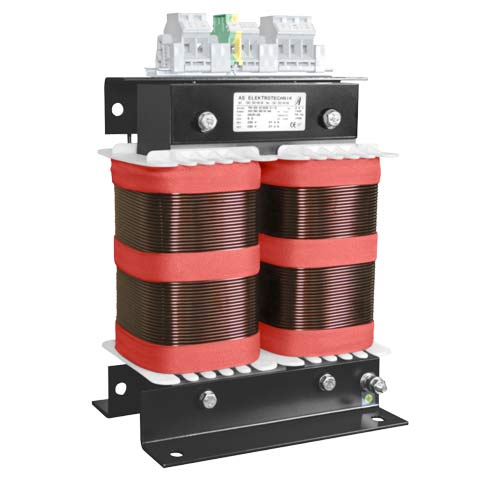Isolation transformers are a key component of the electrical installation supplying the medical premises. They also find numerous applications in power supplies for medical devices. TRAFECO Sp. J. supplies typical isolation transformers for the supply of medical facilities and special transformers meeting the requirements of technical standards and tailored to specific projects.
Medical IT system installations
Medical rooms such as treatment and operating theatres, recovery rooms and intensive care rooms, where patient safety is particularly supervised, are powered by an electrical system that is under special surveillance [1]. The power supply of such rooms is carried out in the IT network system through special power supply and control systems which guarantee electrical safety and continuity of power supply.
The 2TTMED typee isolation transformer is the central element of a separate IT network section in a hospital installation. The transformer separates the galvanically earthed installation of the entire building from the isolated network (IT) in the special rooms section. This solution increases the anti-shock protection of patients and staff. Isolation transformers in medical applications are part of the control and power supply system. The automation system performs several basic tasks in terms of protecting network elements and ensuring continuity of power supply to medical special rooms. The main task of the power supply system is to automatically switch on the power supply reserve during the loss of the main power supply. The back-up energy source can be an independent power line, a UPS device or a generator. The switchover to the back-up power supply must take place in a very short period of time without disruption to patient care. The control and power system additionally performs control functions on key network components. The quality of the insulation in the insulated part of the network (IT), i.e. on the secondary side of the isolation transformer, is continuously monitored. This is done by the so- called insulation resistance indicator. When the insulation resistance value drops below the legally required value, the condition is signalled. The operating parameters of the supply transformer are also inspected. The system continuously monitors the temperature of the transformer windings and the load current. Any overload condition is signalled to the hospital’s electrical service.

Fig.1 Medical grade isolation transformer type 2TTMED intended for supplying power to medical premises.
Medical transformers
Medical grade separating transformers have high demands on reliability and performance stability over their entire service life. These transformers are manufactured in single-phase type 2TTMED or three-phase type 3TTMED. The technical standard PN-EN 51558-2-15 recommends the installation of IT networks in medical premises as single-phase and defines the range of typical transformer powers from 2.5kVA to 10kVA. Furthermore, the standard limits the values of the primary – supply voltage to 1000V. The maximum secondary voltage is set at 250V. The rated frequency of medical isolation transformers should not exceed 500Hz.
Further requirements of the standard [2] concern the variation of secondary voltage, idle current and short circuit voltage. The difference between the secondary voltage in the idle state and the secondary voltage in the loaded state, expressed as a percentage of the secondary voltage under load, shall not exceed 5%.
The idle current of medical transformers should not exceed 3% of the rated primary current. The maximum permissible short circuit voltage is 3% of the rated supply voltage.
Type 2TTMED isolation transformers can operate under overload for a limited period of time. An overload of 1.5xIn in one hour is allowed. The temperature of the transformer windings is monitored by a relay working in conjunction with a temperature sensor built into the transformer winding. The indication of the current winding temperature is continuous and overload conditions are indicated when the primary current is exceeded.
Due to the operation of type 2TTMED transformers in an IT network system, the leakage current of the insulation system is an important parameter. The standard limits the permissible leakage current between primary, secondary and core circuits to 3.5 mA.
Materials and technology
Transformers of 2TTMED type in medical design are magnetic elements made in low-voltage insulation system with insulation materials in temperature classes E (120OC) or F (155OC). The insulation system consists of main, layer and coil insulation. The transformer windings are coaxially wound with copper wires in a single-chamber insulation carcass. This allows the required short circuit voltage to be achieved. Between the primary and secondary windings there is an insulated and earthed copper sheet shield, which guarantees the ultimate galvanic separation of the windings. A suitably reinforced main insulation of the transformer not only guarantees the separation but also limits the leakage current to the value required by the standard [2].
The cores of medical transformers are made of low-loss transformer sheets. The accuracy of the sheet metal braiding combined with the low starts of the magnetic material allows the required idle current to be achieved and high transformer efficiencies to be achieved.
Download PDF
M. Łukiewski – Urządzenia dla Energetyki 4/2018


